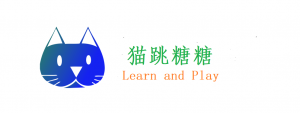Traditional therapeutic uses
Main indications: Infectious disease in the acute phase, otitis, urinary tract infection, respiratory infection, dysentery, boils and abscesses.
In Chinese energy, this formula is used against the toxic Heat which clogs the three Foci.
Associated symptoms : high fever, dry mouth and throat, dark urine, restlessness and irritability, red tongue with a yellow coating, broad, fast and strong pulse
Dosage
As this formula is found in different forms and at different concentrations, it is important to follow the manufacturer's recommendations. Do not exceed the recommended dosage. Cannot be used long term.
comments
It is the standard formula to fight against all infections regardless of the infectious agent, whether localized (otitis, abscess, etc.) or generalized (spreads its toxins throughout the body). This formula should be used in the acute stages of the disease: high fever, dark urine. Several plants have an antibiotic action. Savoy, the main ingredient, has demonstrated an action in vitro and in vivo against : Streptococcus pneumoniae, Neisseria menigitidis, Staphylocccus aureus, Shigella dysenteriae, Shigella sonnei, Pseudomonas aeruginosa, Salmonella paratyphi, Mycobacterium, virusesinfluenza, Hemophilus pertussis, the Leptospiras. The Savoy also has a febrifuge and anti-inflammatory action. The plants of the formula attack microbes on several fronts and do not generate resistance to treatment like antibiotics do.
Historical
This formula is cited in the Wai Tai Bi Yao, The essentials of the imperial bookstore, a work written by Wang Tao in 752 CE.
Research
A study carried out on rats contaminated with endotoxins, showed that Huang Lian Jie Du Tang (the same formula in the form of a decoction rather than in pills) lowers the fever.1
According to three studies done on mice, Huang Lian Jie Du Tang has an antioxidant action on the brain2, an anti-inflammatory action on certain neurons3 and a protective action in cases of weakened memory and learning ability following a stroke.4
Cons-indications
- This formula can hurt Yin, so it should not be taken for a long time. It is very bitter and refreshing and contains no invigorating plants. It is suitable for people of robust constitution.
Composition
|
Name in pine yin |
Pharmaceutical name |
Therapeutic actions |
|
Huang Lian |
Rhizoma coptidis (Savoyan rhizome) |
Chases away Heat, drains Moisture, natural antibiotic effective against viruses, bacteria, fungi and yeasts. |
|
Huang Qin |
Radix scutellariae (skullcap root) |
Drains Heat and Moisture, natural antibiotic effective against viruses and bacteria. |
|
Huang Bai |
Cortex Phellodendri (phellodendron bark) |
Cools the Heat, eliminates toxins. |
|
Zhi Zi |
Fructus gardeniae jasminoidis (gardenia fruit) |
Drains Heat and Moisture from Liver and Gallbladder. |
On the shelves
The products of the following companies meet the good manufacturing practices of theAustralian Therapeutic Goods Administration, which are currently regarded as the highest standards in the world for the evaluation of the manufacturing processes of products from the Chinese Pharmacopoeia.
As these brands are generally reserved for practitioners of traditional Chinese medicine, they may not be found over the counter and may have to be obtained from an acupuncturist or a health professional.
|
|
|
|
|
Available from distributors of acupuncture equipment and traditional Chinese medicine.
|
Research and writing: Arlette Rouleau, Ac., OAQ and Pierre Lefrançois |
ReferencesBensky Dan and Barolet Randall, Chinese Herbal Medicine, Formulas & Strategies, Seattle, Eastland Press, 1990. |
Discover more smart Chinese natural health tips with Art B Zen ( Art for well being)
]]>
















